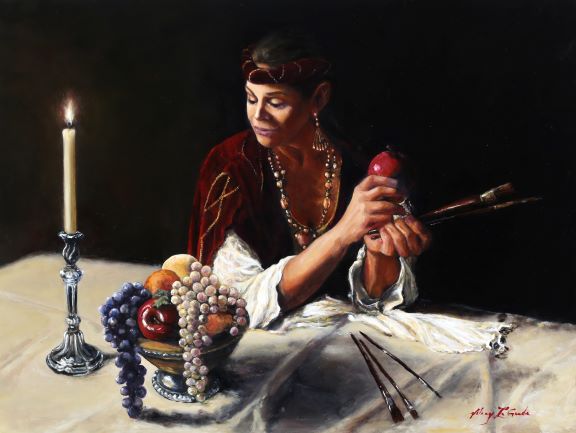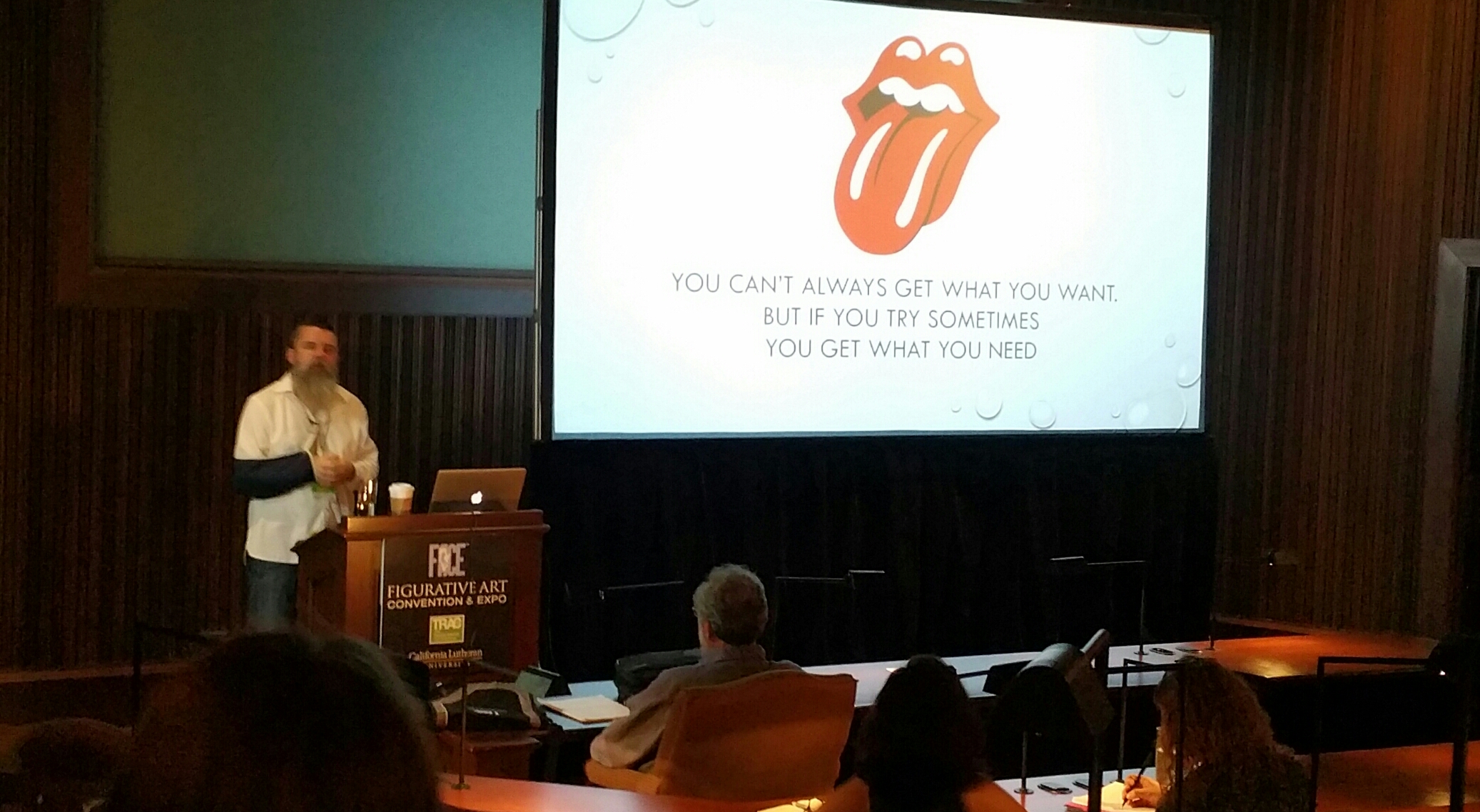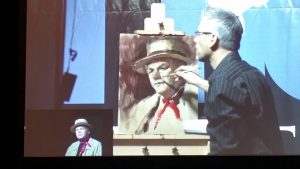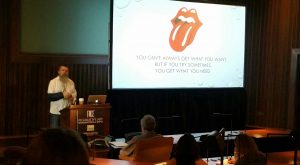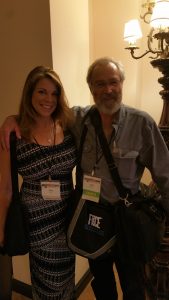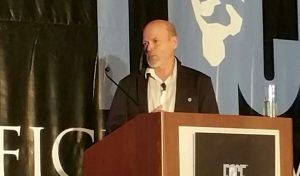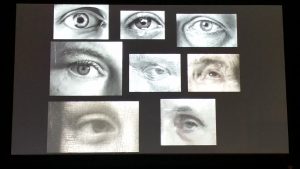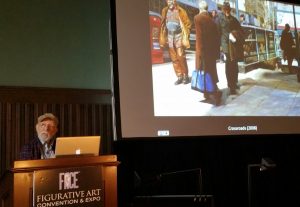Day 4 of FACE began with a painting demonstration by Daniel Gerhartz entitled Training Your Eyes to See.
Gerhartz describes his paintings as “completely loose yet deliberate and faithful, not at all flashy.”
Next I attended a presentation by Dr. Michael Pearce entitled Throwing Down the Gauntlet. Quoting the Rolling Stones, Dr. Pearce noted that you can’t always get what you want when it comes to clientele in the art market.
Today’s market is looking for authenticity. Gallery systems are offering less variety because they are marketing towards buyers who are looking for “the spectacle.” Galleries offer a party-like music atmosphere to lure in the younger clientele with cheese cubes and boxed wine. The only way to pry them to look up from their cell phones is to create a “spectacle”. The art market today is not concerned with the age of enlightenment. It is the duty of representational artists to educate so the future of art does not continue in the abstract “specatacle.” We have a duty to refine and develop art in a neo-Renaissance movement. He blames college art departments for having dropped the ball. The younger generation of artists is taught that they don’t have to have quality or skill so long as they can come up with a theoretical basis for their abstract work. My takeaway from his presentation is that if the viewer needs an explanation of what an abstract painting means, it will not stand the test of time.
Next I attended a presentation by Virgil Elliott entitled Aspire to Inspire.
He said that great art has the power to inspire. Art that touches your heart endures. Although there are superficial changes taking place, artists have something universal. Great art has the power to awaken the viewers’ sensibilities and to bring out the better side of human nature. If we truly love art, we should inspire others in the same manner in which we were inspired.
Next I attended a presentation by Daniel Graves. Graves is the founder of the Florence Academy of Art in Florence, Italy.
His presentation was entitled Our Way Forward Is In the Past. Graves noted that quality is absolutely essential. Therefor it is imperative that you hold onto things that are beautiful and then pass it forward. Graves showed a slide showing eyes painted by famous painters. The top row of eyes were painted in the photorealist style. The bottom two rows were painted by the Old Masters. The photrealist eyes showed no distinguising characteristics. Therefore there is a loss of identity of the artist. Can you tell which artist painted each of these?
Graves noted that the Old Masters’ personalities showed through with each brushstroke. That is the translation of nature to art which makes representational art unique. He concluded by noting that what we paint or sculpt will be our legacy. It will forever be the record of our souls.
Next, I attended a presentation by Max Ginsburg.
Max is a New York artist who witnessed prejudice both as a Jewish kid growing up in New York and in the Army when he was posted to the South where black soldiers were not allowed to use the restrooms but German prisoners were allowed to do so. As a result, his paintings take on social justice themes. As an art student, he and a group of fellow students rebelled against the art educators who discouraged realism and encouraged abstract art. They secretly met before class to pose for one another and to paint figurative art in the classical style. Ginsburg is heavily influenced by the Old Masters.
